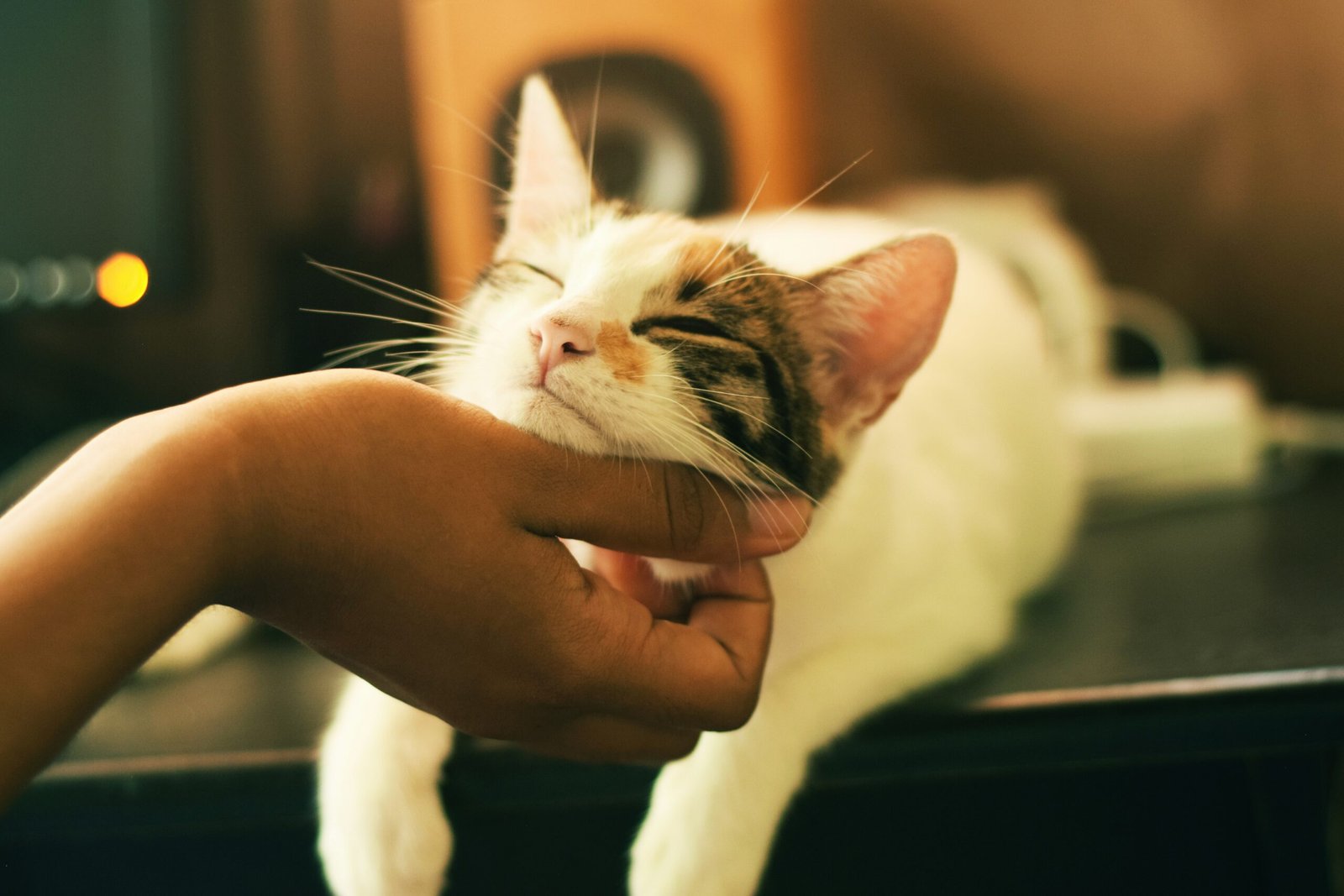
The caracal cat, scientifically known as Caracal caracal, is a fascinating mammal belonging to the Felidae family and Caracal genus. This medium-sized wild cat is found in various regions worldwide, including parts of Africa, the Middle East, and Asia.
The caracal is known for its striking and powerful appearance. It has a muscular build, which enables it to excel in hunting and climbing trees with agility. One of its most distinctive features is its tufted ears, which give the caracal a regal and almost playful look. These tufts of hair serve multiple purposes, such as enhancing its hearing abilities and possibly communication signals with other caracals.
Another characteristic of the caracal is its relatively short tail compared to other wild cats. This tail is not only useful for balance while maneuvering through various terrains but also acts as a communication tool for social interaction.
Now, let’s discuss the price, availability, and name of the caracal cat in Pensacola, Florida. While caracals are fascinating creatures, it is important to note that they are wild animals and not typically sold as pets. Therefore, it is rare to find caracal cats available for purchase in Pensacola or any other location in the United States.
Prices of Caracal Cats in The US, UK and Other European states
Caracal cats, known for their striking appearance and majestic demeanor, have become quite popular among exotic animal enthusiasts. However, acquiring one of these fascinating creatures comes at a price. The cost of a caracal cat can vary depending on several factors, including its age, lineage, and the country where the purchase is made.
In the United States, caracal cats are frequently sought after by individuals who are permitted to keep exotic pets. Prices for these exotic felines can range from $5,000 to $10,000, depending on their pedigree and the breeder. It is essential to note that owning a caracal cat in the US often requires obtaining the necessary permits and adhering to strict regulations.
Across the pond in the United Kingdom, caracal cats are significantly more challenging to find due to strict laws on ownership of exotic animals. Consequently, the limited supply drives up the prices considerably. On average, a caracal cat in the UK can cost between £10,000 to £15,000. Potential owners must also meet the stringent requirements outlined by the Dangerous Wild Animals Act.
In various European states, the availability and prices of caracal cats differ. Countries such as Germany, France, and Italy have reported prices ranging from €8,000 to €12,000. It is vital to research the specific regulations and guidelines imposed by each country’s legislation before considering the purchase of a caracal cat.
Owning a caracal cat can be an extraordinary experience, but potential owners must educate themselves on the legalities, additional costs, and ethical considerations associated with these magnificent creatures. Whether in the US, UK, or other European states, acquiring a caracal cat entails a significant financial investment and the willingness to provide a suitable environment for the animal’s well-being.
Physical Attributes
The caracal cat, also known as the desert lynx, is a medium-sized wild felid known for its unique physical attributes. These cats are widely recognized for their striking appearance, including their muscular build, distinctive tufted ears, and short tail. Caracals have a compact and agile body, measuring about 65 to 90 cm in length, and typically weigh between 13 and 20 kg.
Their coat is typically a reddish-brown color with lighter fur on the belly, and they possess prominent black tufts on their ears, which serve as one of their most distinguishing features. The ears are long and tufted to aid in hearing prey movement, and they possess sharp, retractable claws that enable them to climb trees effortlessly.
With their sharp amber or golden eyes, powerful legs, and well-adapted physical attributes, caracal cats are truly fascinating creatures that have captivated the attention of many wildlife enthusiasts worldwide.
Size and weight
Size and Weight of Caracal Cats
Caracal cats, scientifically known as Caracal caracal, are intriguing creatures known for their striking appearance and unique characteristics. Among Africa’s small cats, caracals take the crown as the largest in size. Males can weigh up to an impressive 40 pounds, while females typically reach a weight of around 35 pounds.
When it comes to their physical dimensions, caracals exhibit considerable height and length. Standing impressively tall, these magnificent felines can reach a height of up to 20 inches. In terms of length, caracals can measure up to an average of 39 inches, from the tip of their nose to the end of their tail.
The caracal’s size and weight make it a formidable predator in its natural habitat. Their muscular build and agility enable them to navigate their surroundings with grace and execute astonishing leaps and bounds. With their superb hunting skills, these majestic creatures are known to tackle prey far larger than their own size.
Coat color and patterns
Caracal cats, also known as desert lynx, possess a wide range of coat colors and patterns that contribute to their distinct beauty. These elusive felines showcase an array of shades and patterns, making them highly sought after among exotic animal enthusiasts.
Coat colors commonly found in caracal cats include black, white, brown, and gray. These basic hues can be further enhanced with variations such as charcoal black, snow white, chocolate brown, and ash gray. Caracal cats often exhibit a solid coloration that uniformly covers their entire body, giving a sleek and elegant appearance.
When it comes to patterns, caracals offer a visual feast. One prominent pattern displayed by these cats is spotting, where distinctive spots adorn their coats. These spots can vary in size and intensity, with some individuals exhibiting dense clusters while others feature scattered markings. The spotted pattern often includes various hues, adding a touch of complexity to the cat’s appearance.
Stripes are another distinctive pattern found in caracal cats. These bold markings run parallel to the cat’s body, emphasizing their regal presence. The combination of stripes and spots can create a captivating blend that showcases the cat’s individuality.
A less common but equally intriguing pattern found in caracals is roan. Roan refers to a coat that displays a mixture of colored and white hairs, resulting in a subtle yet remarkable speckled effect. This pattern adds a touch of uniqueness to the cat’s overall appearance, making each individual truly one-of-a-kind.
Ears and tufts
The caracal cat, known for its striking appearance and powerful hunting skills, has unique features that set it apart from other feline species. One of its most distinctive features is its ears and tufts, which play a crucial role in its survival and adaptation to its environment.
The ear structure of the caracal cat is highly specialized and designed for acute hearing. Its ears are large, erect, and rounded, enabling them to capture even the faintest of sounds. These impressive organs are positioned on the sides of the cat’s head and are slightly pointed towards the front, enhancing its ability to pinpoint the direction of sounds.
What truly sets the caracal cat’s ears apart is the presence of prominent tufts. These tufts are composed of longer, darker hairs that extend from the tips of the ears, giving them a unique and elegant appearance. In terms of size, caracal cat tufts can vary but are generally around 2 to 3 centimeters long. Their shape is typically triangular or elongated, adding to their visual appeal.
While the tufts of the caracal cat do enhance its beauty, they also serve a functional purpose. One of the primary functions of these tufts is camouflage. When the cat is hiding or crouching in tall grass or vegetation, the tufts blend in with the surrounding foliage, making it more difficult for prey or potential threats to spot them.
Additionally, the tufts may also play a role in communication and signaling. They can be raised or lowered depending on the cat’s mood or level of aggression, helping to convey its intentions to other animals or members of its own species.
It is worth noting that while all caracal cats possess tufts, there can be variations between individuals and certain species. Some caracal cats may have smaller or less prominent tufts, while others may have larger and more pronounced ones. These variations add to the diversity within the species and contribute to each cat’s unique appearance.
Natural Habitat
The natural habitat of the caracal cat, scientifically known as Caracal caracal, is diverse and widespread across Africa, the Middle East, and parts of Asia. These medium-sized wild cats are highly adaptable, although they prefer habitats with a mix of grasslands, scrublands, savannas, and woodlands.
Caracals are found in various types of terrain, ranging from deserts and mountains to forests and coastal regions. Their distribution extends from the western parts of India and the Arabian Peninsula, across Africa south of the Sahara, and as far east as parts of Iran and the Arabian Peninsula. This wide range of habitats is a testament to their ability to thrive in diverse conditions, making the caracal one of the most fascinating and adaptable feline species in the world.
Regions where caracal cats are found
Caracal cats, scientifically known as Caracal caracal, can be found in various regions across the world. These elegant and elusive creatures inhabit several countries in Africa, the Middle East, and parts of Asia.
In Africa, caracal cats are found in a wide range of habitats, from the savannahs and grasslands in the eastern and southern regions, such as Kenya, Tanzania, South Africa, and Namibia, to the wooded areas of West Africa, including Senegal and Niger. These cats are highly adaptable and can thrive in diverse environments, including deserts, semi-arid regions, and mountainous terrain.
Caracals are also known to inhabit parts of the Middle East. They can be found in countries like Iran, Saudi Arabia, and Yemen, where they are typically found in the arid or semi-arid regions. In these areas, caracals are often spotted in scrublands, rocky areas, and dry forests.
Moreover, these fascinating felines have a presence in some parts of Asia, primarily in the Indian subcontinent. India, Pakistan, and Nepal are the key countries where caracals are found. They inhabit various habitats in these regions, including scrublands, grasslands, and dry forests.
Overall, caracal cats have a broad distribution across different regions. Their ability to adapt to various habitats allows them to survive in areas with different climates and vegetation. However, it is important to note that their populations may vary in abundance due to habitat loss, illegal hunting, and conflicts with humans.
Preferred habitats within these regions
Caracals, also known as desert lynxes, are medium-sized wildcats native to Africa, the Middle East, and parts of India. These elusive felines are found in a variety of habitats within their natural regions, including grasslands, savannas, woodlands, and even arid deserts. Understanding their preferred habitats is crucial for creating suitable captive environments for caracals in terms of large covered enclosures, hiding spots, and ample running space.
In their natural regions, caracals often seek out areas with dense vegetation, such as thickets and bushy landscapes. This provides them with ample hiding spots to stalk prey and avoid potential threats. When designing enclosures for caracals in captivity, it is essential to replicate this natural habitat by incorporating dense vegetation and shrubbery to provide the cats with opportunities for shelter and concealment.
Furthermore, caracals are known for their exceptional jumping abilities. They have been observed leaping up to 10 feet in the air to catch birds in flight. Therefore, it is crucial to create enclosures with high fences to prevent them from escaping. A minimum fence height of 8 feet is recommended to ensure the caracals cannot leap over and potentially pose risks to people and livestock.
The importance of preventing caracals from escaping their enclosures cannot be understated. These wildcats have sharp teeth and strong jaws, making them capable of inflicting harm on humans and domestic animals. Additionally, caracals are skilled hunters and may prey on livestock such as small goats and sheep if given the opportunity. By securing their enclosures appropriately, we can provide caracals with a safe and suitable environment while also protecting both human safety and the well-being of livestock.
Behavior
Social Behavior:
While caracal cats are primarily solitary animals, they have been observed forming small groups consisting of a mother and her offspring. These groups usually disband as the young cats reach maturity and venture out to establish their own territories. Adult caracals are territorial and mark their space using scent signals, urine spraying, and even scratching the ground. Male caracals have larger territories that encompass several female territories, ensuring they have access to potential mates.
Hunting Techniques:
Caracals are exceptional hunters, displaying remarkable agility and precision when capturing their prey. These cats rely on their extraordinary jumping ability to pounce on birds flying in mid-air, often stunning them with a single swipe. They are also capable of leaping great heights to snatch prey perched on tree branches.
Small to medium-sized mammals make up the bulk of their diet, including rodents, hares, and antelopes, which they skillfully ambush or chase down. Caracals have been observed using their keen hearing to locate underground prey, such as burrowing rodents, and dig them out with their powerful forelimbs.
Temperament:
Known for their independence and reserved nature, caracal cats may exhibit aloofness towards humans. They typically do not seek out affection or enjoy being handled, preferring to maintain a degree of distance. However, when raised in captivity from a young age and properly socialized, caracals can form strong bonds with their human caretakers. It is important to note that due to their wild instincts and natural predatory behavior, caracals are not suitable as pets for most individuals.
Solitary nature
The caracal cat, known for its distinctive tufted ears and graceful demeanor, exhibits a remarkably solitary nature. These majestic felines prefer solitude over social interactions, and their aversion to companionship is rooted in their inherent behavior.
Caracal cats are most commonly found alone, wandering the vast terrains of their natural habitat. While other felids may seek social interactions, these solitary creatures thrive in their own company. The preference for being alone is deeply ingrained in their instincts, allowing them to fully embrace their solitary lifestyle.
There are several reasons why caracal cats seek solitude. Personal space is of utmost importance to them, and they relish the freedom to roam their territory without the constraints of social bonds. It provides them with the tranquility and independence necessary for survival. Furthermore, their aversion to social interactions allows them to focus on hunting and protecting their territory without any distractions.
Solitude also offers caracal cats the opportunity for introspection. It allows them to observe their surroundings and evaluate potential threats or prey. By being alone, they become more attuned to their environment, enhancing their ability to adapt and survive.
Hunting techniques
Hunting techniques are diverse and depend on the specific target species and the environment in which the hunting takes place. Hunters employ various methods, including stalking, still hunting, and tracking, to increase their chances of success in capturing their intended game.
Stalking is a technique that involves silently approaching prey while utilizing cover, such as vegetation or terrain features, to remain concealed and undetected. The key to successful stalking is patience, stealth, and the ability to move quietly and slowly. This technique is commonly used when hunting animals with acute senses, such as deer or other small mammals. It requires the hunter to carefully observe the animal’s behavior and adjust their movements accordingly, ensuring they remain out of the animal’s sight, sound, and scent range.
Still hunting, on the other hand, entails waiting for the target animal to come within range without actively pursuing it. This technique requires the hunter to possess excellent knowledge of the animal’s habits and preferred habitat, as well as a high level of observation and patience. The ability to sit for extended periods of time without making any sudden movements or noises is essential for successful still hunting. This method is commonly employed when hunting animals such as turkey or waterfowl, where the hunter sets up in a concealed location and waits for the game to approach.
Tracking is a method used to locate and follow the trail left by the intended game. It involves interpreting visual cues, such as footprints or disturbed vegetation, as well as spoor signs like scat or hair left behind by the animal. Tracking requires a high level of skill in identifying and interpreting these signs, as well as knowledge of the target species’ behavior and movement patterns. It allows the hunter to follow the animal’s path and position themselves for an opportunity to get within shooting range.






